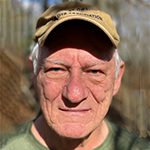I am involved with a organization called Virtual Flight Academy. VFA is a non-profit organization that is working with the Navy and Air Force to try and help pre-pilot training students. VFA has enlisted the services of retired pilots to help the young pilot students. As such, I have had the opportunity to talk to several current USAF flight instructors, and twice fly the T-6 simulator.
We have been developing a list of what we believe we can do with these students to help prepare them for the real aircraft flights. The consensus is that we can make them more comfortable in the cockpit by helping them learn the checklists, controls, and general flow of flying. In test cases we have taken a student up in Prepar3D and the T-6 via multiplayer. The VIP takes the student through the checklists and start up procedures. He then allows the student to take off and fly the same departures he will be flying at his training base. Radio communications and terminology are practiced.
Any maneuvers are primarily designed to teach the proper airspeeds, attitudes, and safety clearance checks. In other words, we are trying to get the student to start thinking about flying the military way. We want him or her to be comfortable with the radio calls and terminology, checklist procedures, and knowing how to fly departure and recovery procedures, etc.
We are not trying to teach the student how to fly the airplane. As
000rick000 mentioned above, much of learning to fly is "seat of the pants" or "getting the picture." While I can tell a student where on his windshield the horizon should be while rolling off the perch into final, until you have done it in the real airplane, you will not really know it. It is more than seeing it on a monitor. It is the feeling your body senses as the airplane changes speed and starts to descend. Too much, too little, or just right, a pilot can feel that through his senses of hearing, touch and inner-ear.
Landing is especially critical with the picture. When you land you use your peripheral vision to get a picture of where you want to be, attitude wise and height above the runway. A local CFI once told me he tells people to not to land computer simulator (games) while learning to fly. The main reason is the "picture."
So, while a flight simulator computer program can help you in learning to fly, it will not teach you how to fly. I often smile inward when someone tells me he thinks (it is always males) he could land an airliner if the pilots were become incapacitated because he has flown airliner simulators. I just hope I am not on that airplane when he attempts this real world landing. Simulators can't simulate the "pucker factor."





 Reply With Quote
Reply With Quote








Bookmarks